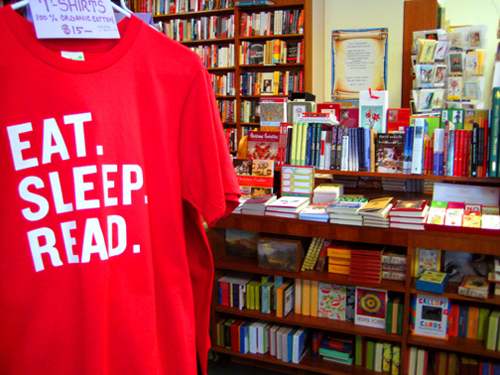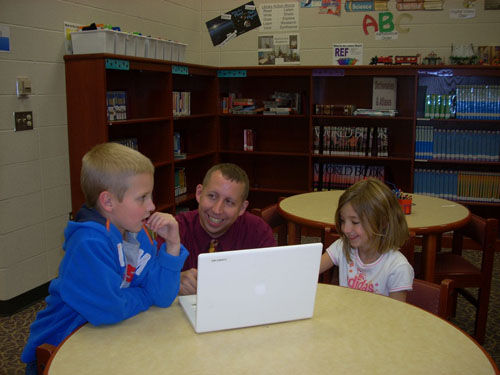
There are many more ways to read news material these days, thanks to the Internet. The Internet makes news easy to get, requiring nothing more than the click of a mouse or the touch of your finger. The Internet gives us many more places to get our news, whether that is the online version of our favorite newspaper, our favorite blog, ou um dos muitos meios de comunicação social,. A Internet também nos permite focar com mais profundidade sobre a notícia de que realmente importa para nós e simplesmente ignorar todas as notícias que não faz. Desde 2008, mais pessoas obtiveram a sua notícia da Internet do que de jornais, e que estes continuam a declinar.
Então, o que isso significa para o futuro desses jornais impressos que manter acumulando na mesa da cozinha ou ser jogado fora, muitas vezes fechado? E se os adultos estão lendo menos das versões impressas, what will the younger generations be doing in the not too distant future?
If you are creative and innovative enough, you can re-invent any business in decline, direito? Even the struggling business of printed newspapers? The creators of America’s bestselling curriculum-based product, Brain Quest, are proving that when it comes to kids and even their parents — sim, you can.
Using the funds made in America from Brain Quest vendas (the phenomenon celebrates its 20th anniversary this year with 36 million copies in print), Play Bac launched Minha vida diária, the first daily newspaper for kids, em 1995. Le Petit Quotidien e L’Actu followed in 1998. The three dailies currently have about 150,000 subscribers and 2 million readers in France.
Editor-in-chief and co-founder of Play Bac, François Dufour, recently chatted with me about his follow-up to Brain Quest and why he believes there is a future for printed dailies for kids.
What do you believe is so unique about your proposition for kids?
We have no competition in France. Le Petit Quotidien (7 years and up), Minha vida diária (10-14 anos), e L’Actu (14 and up) are the only daily papers available for kids aged 7 a 17, 6 days a week. Nosso conceito é trazer as crianças a ler, pelo menos, 10 minutos por dia. Em termos de nossa singularidade? How about 99 por cento dos nossos leitores manter todas as questões. E como sobre 1 pai de 2 e 2 moms fora de 3 leia também nossos jornais para as crianças.

Porque você acha que as crianças apreciá-los tanto?
As crianças adoram-los, porque o conteúdo não é notícia adulto explicou para as crianças! É uma notícia um nove ou 12 ou 15 anos de idade, está interessado em. We seldom feature an article on the same day it is published in adult news. One exception was the day bin Laden was killed. Também, I think kids like the fact that our papers are short (four to eight pages long). Our papers are also very visual. Finalmente, the journalism in our newspapers is serious. It is not childish.
Paper newspapers in this country are experiencing declines in their audiences. Can you give some examples of the kind of strong content you believe is attracting your audience?
I do a monthly survey of each newspaper with a panel of 200 readers. We’ve discovered that the youngest readers like to read incredible animal stories in the news. The next age level of readers likes to be surprised by news. An example of this is news that reveals new records, new discoveries, or new inventions. Our oldest readers like news about injustice, such as stories about the death penalty or DNA mistakes. And all readers like “parlez-moi de moi” histórias, meaning stories about my daily life at school or at home where I (o leitor) pode se identificar com alguém na notícia.

Tem a intenção de lançar seus jornais para crianças na Internet em um futuro próximo?
Em primeiro lugar, vamos ficar no papel, porque o nosso público realmente prefere ler em papel. Por favor, note que eu disse nosso público prefere “ler” em papel não “comunicar.” Segundo, os pais querem que seus filhos para ficar longe da Internet para, pelo menos, 10 minutos por dia. Os pais não perguntam as crianças a ler nossos jornais. Os pais apenas assiná-los. The paper then arrives with the postman every morning. Parents would not pay for another Internet activity!
How do you see the evolution of the newspaper market in France and Europe for printed children’s newspapers, online news, and downloads to eReaders over the next 3 a 5 anos?
I do believe the revenues will continue to grow on tablets and eReaders. Our newspapers have been downloadable for a year already. But right now we only have 150 readers per day per app.
What opportunities are you pursuing internationally and what are your results to date?
We have licensees in English in Hong Kong and we are now expanding in Asia. We are also published in Arabic in Qatar. We’ll be expanding soon to other parts of the Middle East. We also do a weekly “best-of” in French in a Swiss Sunday paper, and in English in an Indian newspaper.
What viable role do you believe printed newspapers can play in the spectrum of media providing news information in the next twenty years?
Eu acredito que algumas pessoas mais velhas vão continuar a ler em papel (um luxo). Em 49 anos de idade (antes de ficar velho!), Eu desisti de papel para o iPad. Quando todo mundo tem um tablet, Eu não vejo um uso para o papel. No entanto, o papel viável ainda é o editor. As pessoas podem optar por construir as suas próprias fontes de notícias, por exemplo, no Twitter. Mas nada substitui um bom editor, and I would add, a good visual editor, criando a notícia para o leitor de modo que torna a leitura agradável e interessante.

Fotos cedidas of Play Bac.
Como vamos Leia? Página da comunidade
Para mais Como vamos ler? artigos: clique aqui
C. M. Rubin é o autor da série on-line amplamente lido, “A Pesquisa Global para a Educação,” e também é o autor de três livros mais vendidos, Incluindo “The Real Alice no País das Maravilhas.”





Comentários Recentes